TL;DR
Turn any corner into a productive home office with smart desk setups, ergonomic chairs, vertical storage, and lighting that boosts focus. You’ll learn how to create a home office in a small corner and make it look intentional, not improvised.
Why corner home offices work in 2025
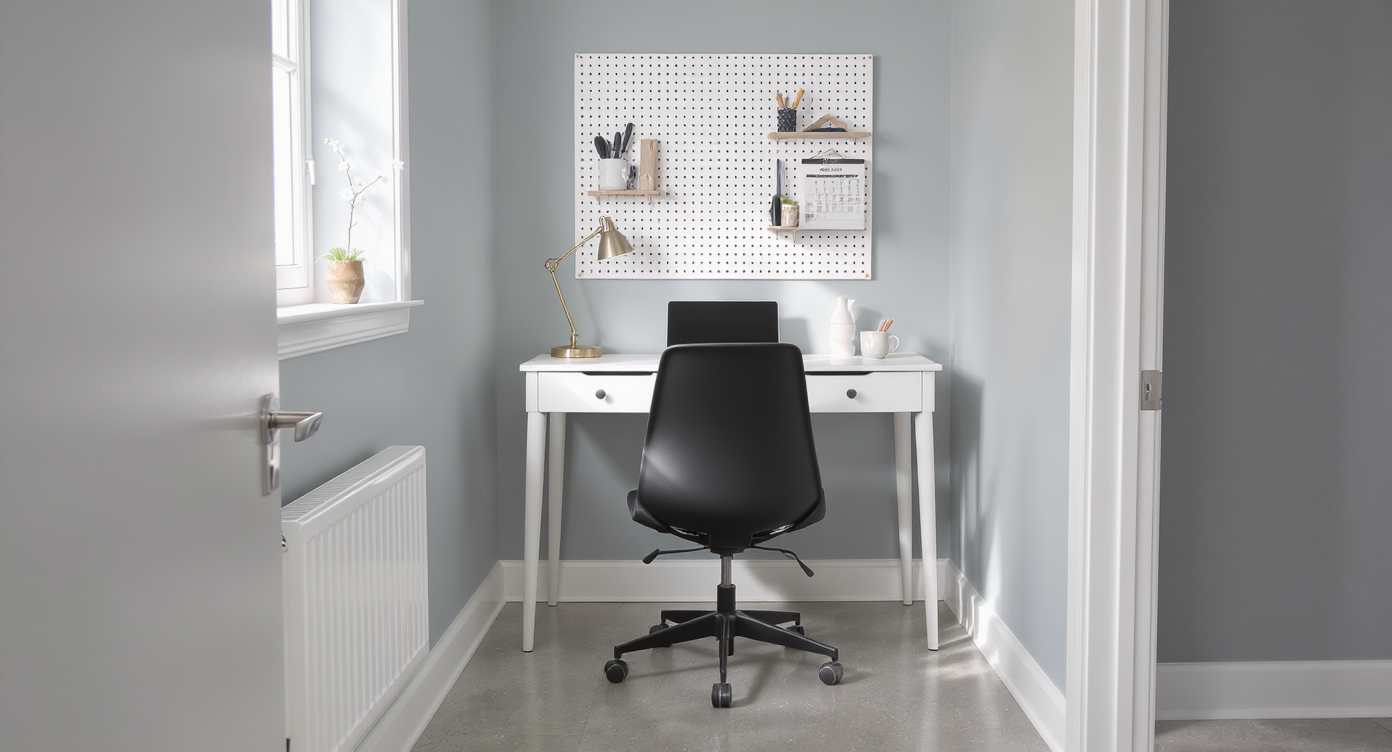
Transforming a hallway niche into a focused workspace with smart furniture and vertical storage maximizes small-space potential.
A dedicated home office doesn’t have to mean a dedicated room. Designers often say the most productive work-from-home setups start with boundaries, not square footage. Here’s the thing: when your brain sees a consistent place for work, it’s easier to switch on, focus, and then switch off later.
I’ve seen this happen in real homes. A client tucked a 90 cm console into a hallway niche and went from working on the sofa to shipping proposals on time. A renter I know used a drop-leaf table in the living room and folds it away at 6 p.m. every day. Different layouts, same result - a clear line between life and work.
If you’re thinking there’s no space, look again. With the right desk setup, ergonomic chair, vertical storage, and layered lighting, even an overlooked corner can become a professional-looking WFH corner that supports deep work and healthy posture.
A simple philosophy for small-space home offices
Small-space home offices succeed when function leads style, then style seals the deal. Start with core needs - laptop, monitor, task light, storage - and add character that makes you want to sit down and start.
Think of these ideas as building blocks for DIY home decor, budget decorating ideas, small-space hacks, and practical 2025 design trends. Experts recommend setting a minimum 24 inches of knee clearance and 30 inches of leg depth under the desk so the setup feels spacious even when the footprint is small.
Anecdote
In my own flat, a 100 cm console in a hallway alcove became a stealth desk with a brass sconce and a single cable grommet. It looks like styling, but it’s where the work gets done.
DIY HACKS & TRICKS: 5 ways to build a WFH corner that actually works
01. The Under-Stairs Home Office Nook
Rule of thumb: fit the desktop wall to wall at 28 to 30 inches high and allow at least 24 inches for knee clearance.
What it is: A built-in or wall-to-wall board turns the dead space under stairs into a compact, quiet workstation that looks custom.
How it works: Use a cut-to-size slab or plywood top fixed to cleats along the wall, then add slim shelving between stringers. Stairs naturally buffer noise, so this spot feels calmer than a living area. Designers often advise a continuous surface the full width to avoid awkward gaps and to maximize storage below with rolling file boxes. Keep the palette consistent with the adjacent room for a seamless feel. In one family home, a 120 cm span and a single sconce transformed drop-zone clutter into a tidy WFH hub that doubles as homework space at night.
How to try it:
- Measure the full width and install 1x2 cleats level around three sides to support the desktop.
- Use floating shelves spaced 12 to 14 inches apart for books and bins.
- Add a cord grommet and a slim power strip mounted underneath for clean cable management.
Image caption: Quiet built-in desk under stairs with slim shelves and cord grommet. Alt: under-stairs home office nook with floating shelves and compact chair.
02. The Fold-Down Wall Desk
Best for multiuse rooms, a drop-leaf desk folds to less than 6 inches deep yet opens to a full workstation.
What it is: A wall-mounted drop-front cabinet that becomes a desk by day and disappears at night - ideal for living rooms and studios.
How it works: The hinged front forms the work surface while side stays hold weight. Inside, add shallow shelves for notebooks and a laptop. Experts recommend mounting the center of the work surface at 29 inches off the floor and hitting at least two wall studs. In a recent micro-flat I styled, a 30 inch wide folding desk sat beside the balcony door; at 6 p.m., it snapped shut, and the room shifted back to lounge mode. Keep the chair lightweight so it slides into a nearby corner when not in use.
How to try it:
- Locate studs and use heavy-duty lag screws rated for 100 pounds or more.
- Line the interior with cork or pegboard for easy pin-ups and tool storage.
- Stick felt pads under the flap to protect the wall when closed.
03. The Console-Desk Hallway Hack
If you have a 12 to 16 inch deep alcove, a narrow console table can double as a desk without blocking traffic.
What it is: A slim console or writing table turns a quiet circulation zone into a surprisingly productive WFH corner.
How it works: Choose a table 30 inches high and pair with a compact task chair that tucks fully underneath. Add a wall-mounted task light to free up surface area. Designers often note that a 20 to 28 inch monitor distance reduces eye strain, so plan wall space for the screen or use a laptop riser. I once slid a 100 cm console into a hallway niche and added a brass sconce; it looked like a styling moment but functioned like a real office.
How to try it:
- Secure the console to the wall with brackets for stability on narrow legs.
- Mount a floating shelf 10 to 12 inches above the desk for in-tray storage.
- Run a flat cord cover along the baseboard to keep cables invisible.
04. The Corner-Shelf Workstation
Triangular or L-shaped shelves can turn a 90-degree corner into a desk that uses every centimeter of space.
What it is: Floating corner shelves stacked with a deeper middle shelf create a light, built-in look with no floor legs.
How it works: The key is depth. Make the middle shelf 18 to 20 inches deep for typing comfort, with upper storage shelves at 10 to 12 inches. Use steel brackets or concealed cleats screwed into both walls. Experts recommend keeping the keyboard surface 1 to 2 inches below elbow height for neutral wrists. A friend in a rental used this with removable anchors and left with just a dab of spackle to patch.
How to try it:
- Template the corner with cardboard before cutting plywood to fit.
- Finish the edges with iron-on veneer for a furniture-grade look.
- Add an LED light bar under the upper shelf for 400 to 600 lux task lighting.
05. The Cabinet-Office Disguise
Convert a freestanding wardrobe or built-in cabinet into a clo ffice - a closet office - that hides away when you’re off duty.
What it is: Interior shelves become a desk, with vertical pegboard, magnetic strips, and hidden power inside a cabinet.
How it works: Remove a lower shelf and add a 24 inch deep work surface on side cleats. Hinged or slide-out extensions add extra space for a keyboard. Designers often advise a minimum 30 inch interior width so shoulders aren’t pinched. A real estate investor I worked with staged a studio by converting a 32 inch armoire; buyers loved the trick because it kept the living room calm after hours.
How to try it:
- Ventilate by drilling a 2 inch grommet hole near the back for cords and airflow.
- Use motion-sensor puck lights inside for instant, shadow-free illumination.
- Mount a shallow drawer under the desk for chargers and pens to keep surfaces clear.
Image caption: Cloffice tucked inside a vintage cabinet with pegboard wall. Alt: hidden home office inside wardrobe with fold-out keyboard shelf.
What ties these WFH corners together
What ties these ideas together isn’t just frugality - it’s intention. Each small-space solution respects flow, light, posture, and storage so the office feels integrated, not improvised.
Notice the patterns: reuse dead zones, go vertical, light the work plane, and keep cables invisible. Experts recommend ending each day with a 2 minute tidy - clear the desk, coil the cord, park the chair - so tomorrow’s focus comes easy.
Visualize before you DIY
Visualize your WFH corner before you drill holes
Previewing colors, furniture, and lighting on a photo of your room reduces mistakes and speeds decisions.
Before you pick up a drill, test-drive your ideas digitally. Upload a snapshot of your room to ReimagineHome, swap in a corner desk, try floating shelves, adjust lamp warmth, and see how paint colors change with daylight. It’s a confidence tool - you can explore a limewash wall, a two-tone scheme, or alternative furniture footprints in seconds, then save the version that feels right.
Visualization Scenario
Upload a photo of your living room corner to ReimagineHome, test an L-shaped shelf desk against two paint colors, drop in a task lamp, and compare daylight vs evening lighting before buying a single screw.
FAQ: People also ask about small home offices
How do I create a home office in a small corner?
Use a 28 to 30 inch high desk, add vertical storage, and position a task light to deliver 400 to 600 lux on the work surface. Experts recommend at least 24 inches of leg clearance and a dedicated outlet with a surge protector.
What is the best lighting for a small home office?
Blend natural light with an adjustable desk lamp offering warm 2700K to cool 5000K modes. Place the lamp opposite your dominant hand to reduce shadows and glare.
How can I hide a desk in my living room?
Choose a fold-down wall desk or convert a cabinet into a cloffice with doors that close. Matching finishes to existing furniture helps the workspace disappear visually.
What ergonomic chair should I buy for a WFH corner?
Look for lumbar support, height and arm adjustments, and a seat that allows feet flat on the floor with 90 degree knees. A breathable back and high-density foam seat improve long-session comfort.
How far should my monitor be from my eyes?
Set the screen 20 to 28 inches away with the top of the display at or slightly below eye level. A laptop riser and external keyboard help maintain neutral wrists and neck.
Bring it all home
In 2025, the best home offices aren’t bigger - they’re smarter. A good chair that fits your frame, a desk at the right height, light that flatters and focuses, and storage that vanishes visual noise will change how you work and how you rest. Start with one corner, measure like a pro, and treat the setup like a piece of furniture you’ll live with for years.
Once your little nook earns its keep, you’ll wonder how you managed without it. And if you want to see the future before you commit, let ReimagineHome show you what your corner can become.
.svg)

.svg)

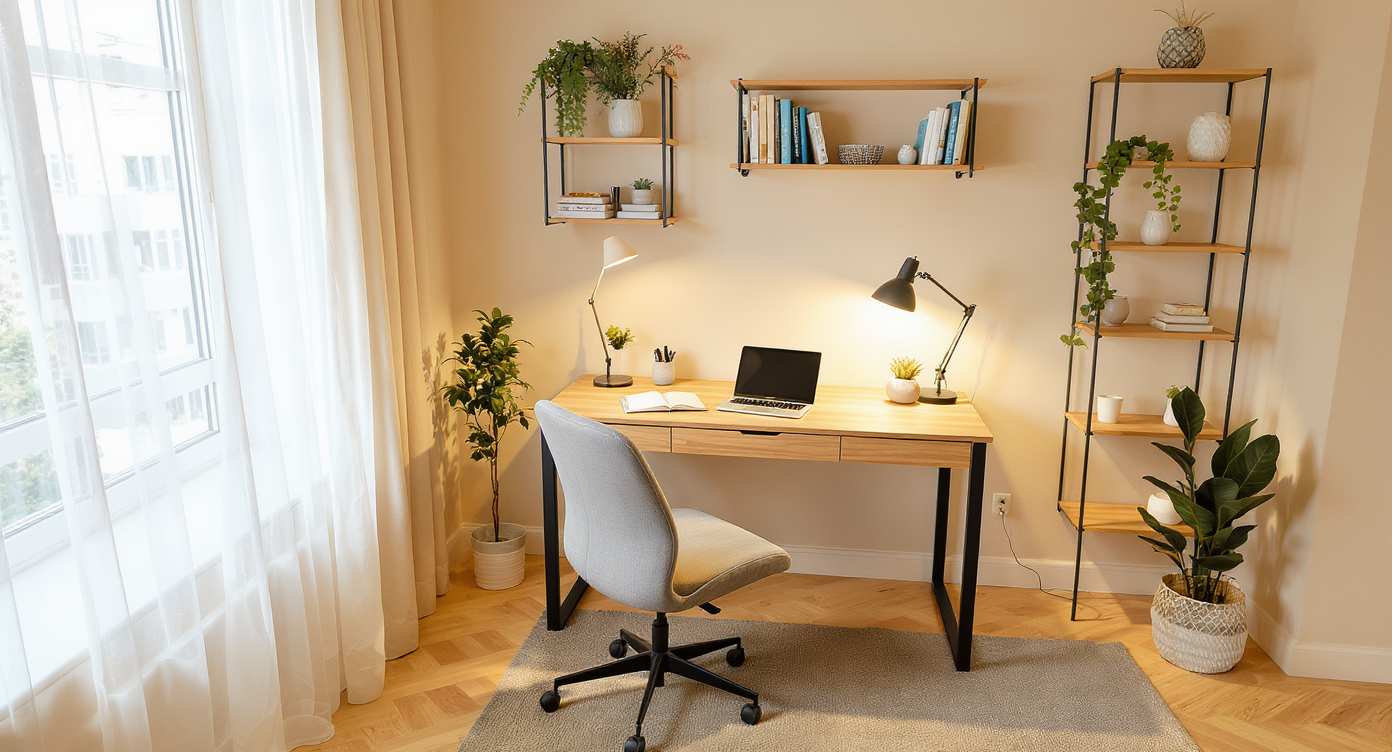


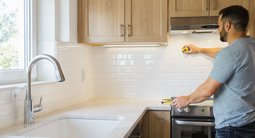

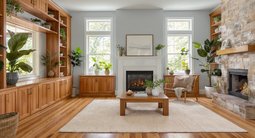
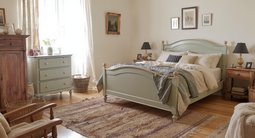



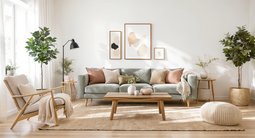


.png)